CASMAD Summary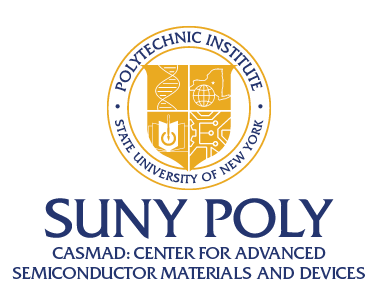
The Center for Advanced Semiconductor Materials and Devices (CASMAD) is focused on advancing the semiconductor research, technology, workforce training and policies promoting these developments at SUNY Polytechnic Institute. By leveraging existing SUNY Poly expertise in the field of semiconductor materials and devices and collaborations with other academic institutions and industry the center serves to create a thriving environment for transformative research in the advanced materials and devices field, with multidisciplinary ramifications leading to innovations in areas that are of significance for the society. The center activity is focused on areas of expertise that include material science and new device architectures with applications for Power Electronics, Renewable Energy, Sensors and Optoelectronics, Energy Storage and Conversion and Micro-Electro-Mechanical-Systems (MEMS).
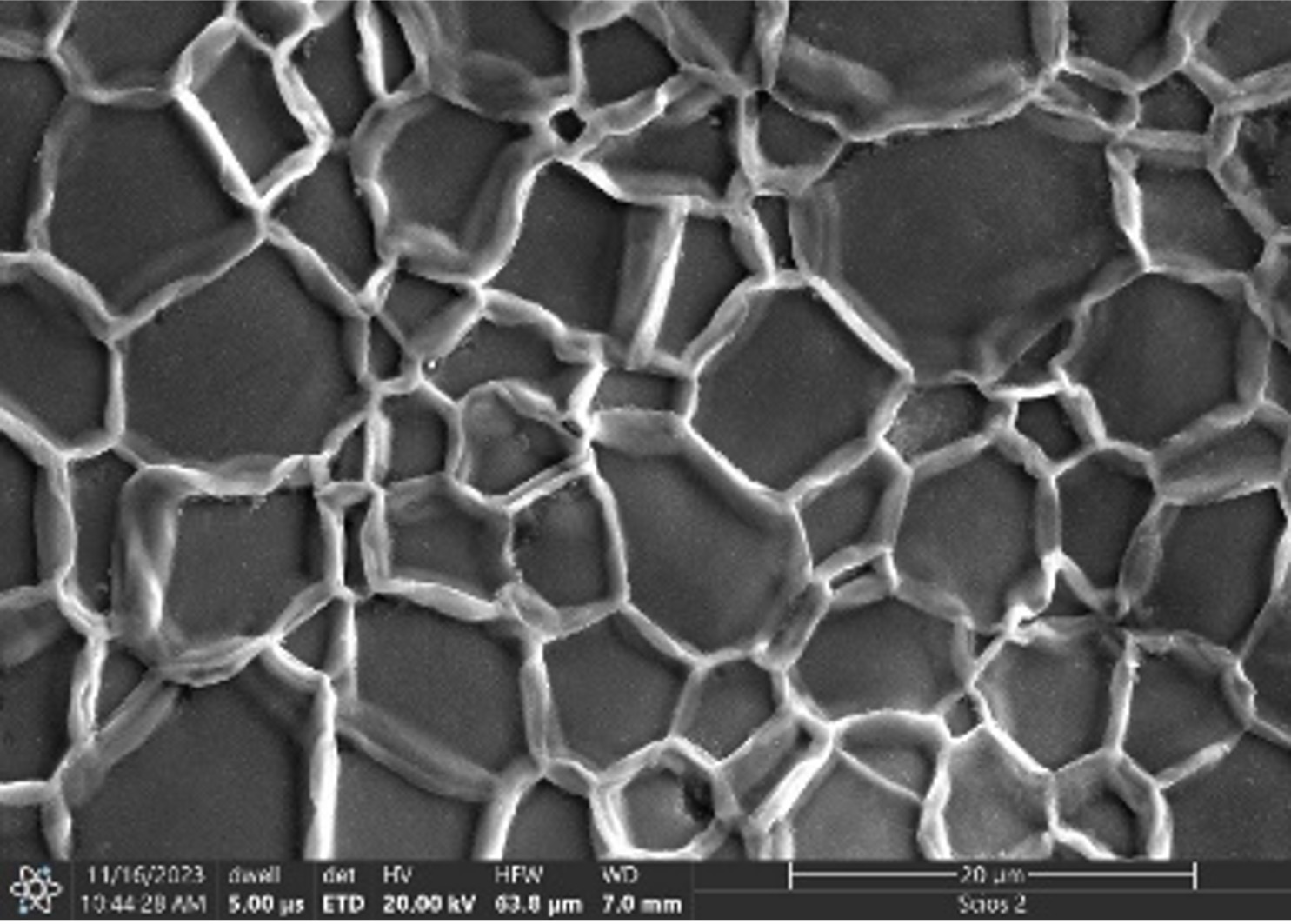
The research aims to develop new materials, devices and processing technologies with an emphasis on wide and ultrawide bandgap materials, metal-oxide semiconductors for low-power complementary architectures, photo-electrochemical materials and devices, 2-dimenssional materials and technologies for defect-free material synthesis, etc.
Power Electronics: Will advance the electrical and thermal properties of the power devices by synthesizing emerging semiconductor materials as a platform for novel or improved device architectures. Such materials will include but will not be limited to: ScAlN, ScMgN, Ga2O3, AlN and diamond. This thrust will include the design and development of high-performance SiC-based power devices, CMOS, and Power ICs.
Sensors: Aims to uncover new sensor materials and concepts. Since there are no human biological sensors for pollutants created by the industrialized world, artificial sensing devices that interface between people and their environment are needed. In addition, sensors play a key role in connected devices and machine-to-machine communication (IoT). Therefore, the development of ultra-low power, high density, sensitive, reliable, selective, and scalable gas sensor technology is critically needed for IoT4, wearable electronics, smartphones, and medical devices.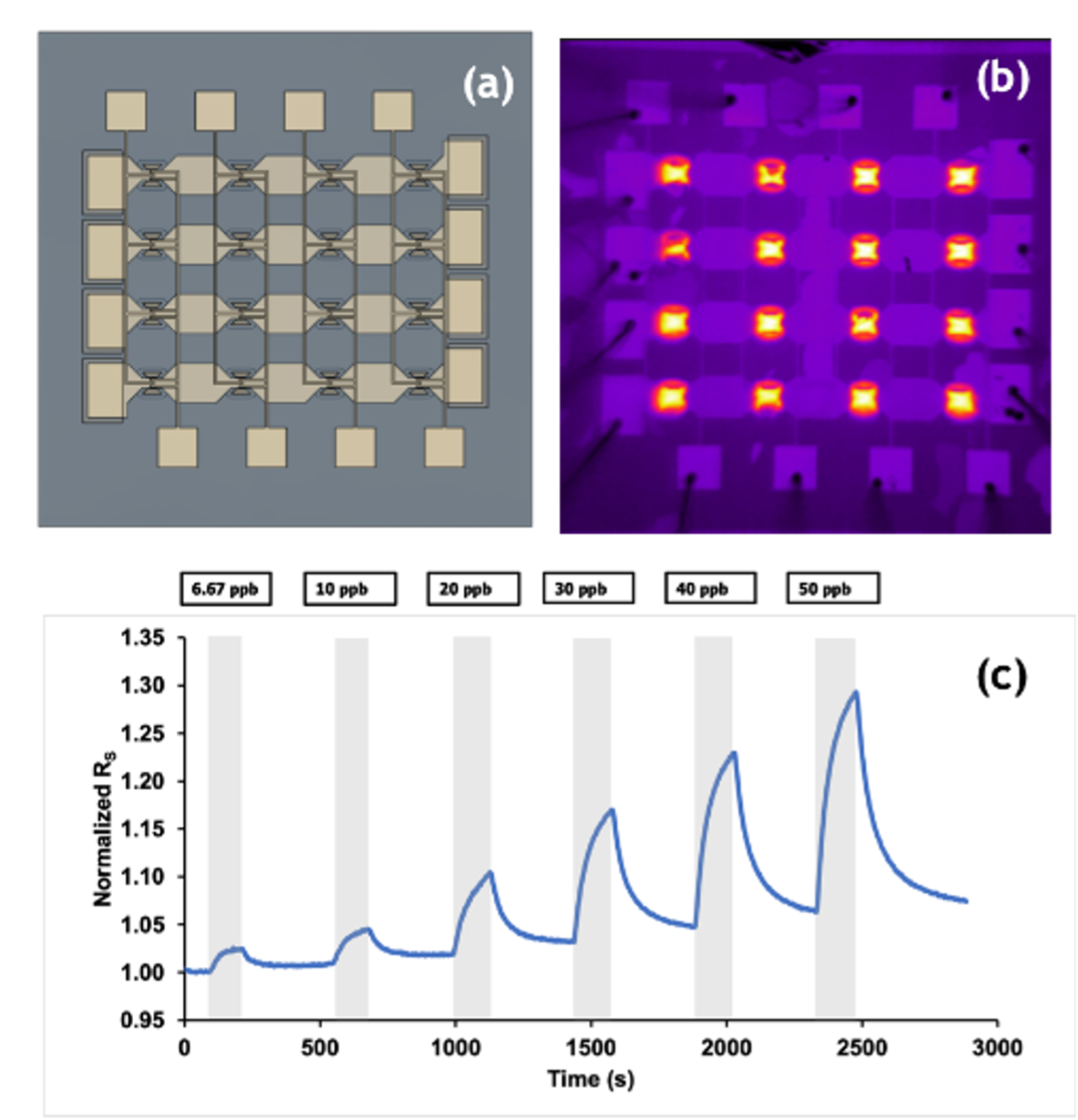
Optoelectronics: The III-V compound materials have demonstrated extreme light absorption and emission efficiency in the visible spectrum, but the Ultra-Violet (UV) and the Infra-Red (IR) domains of the electromagnetic spectrum have yet to benefit from materials and devices with similar efficiencies. This research focuses on the development of novel III-V materials and complementary metal-oxides that can expand the efficient light emission into UV and IR domains as well as address the root causes of the inefficient light emission in the green-red spectral range. This work has the goal to demonstrate novel concepts that allow the heterogeneous integration of III-nitride materials for the fabrication of micro-LED arrays.
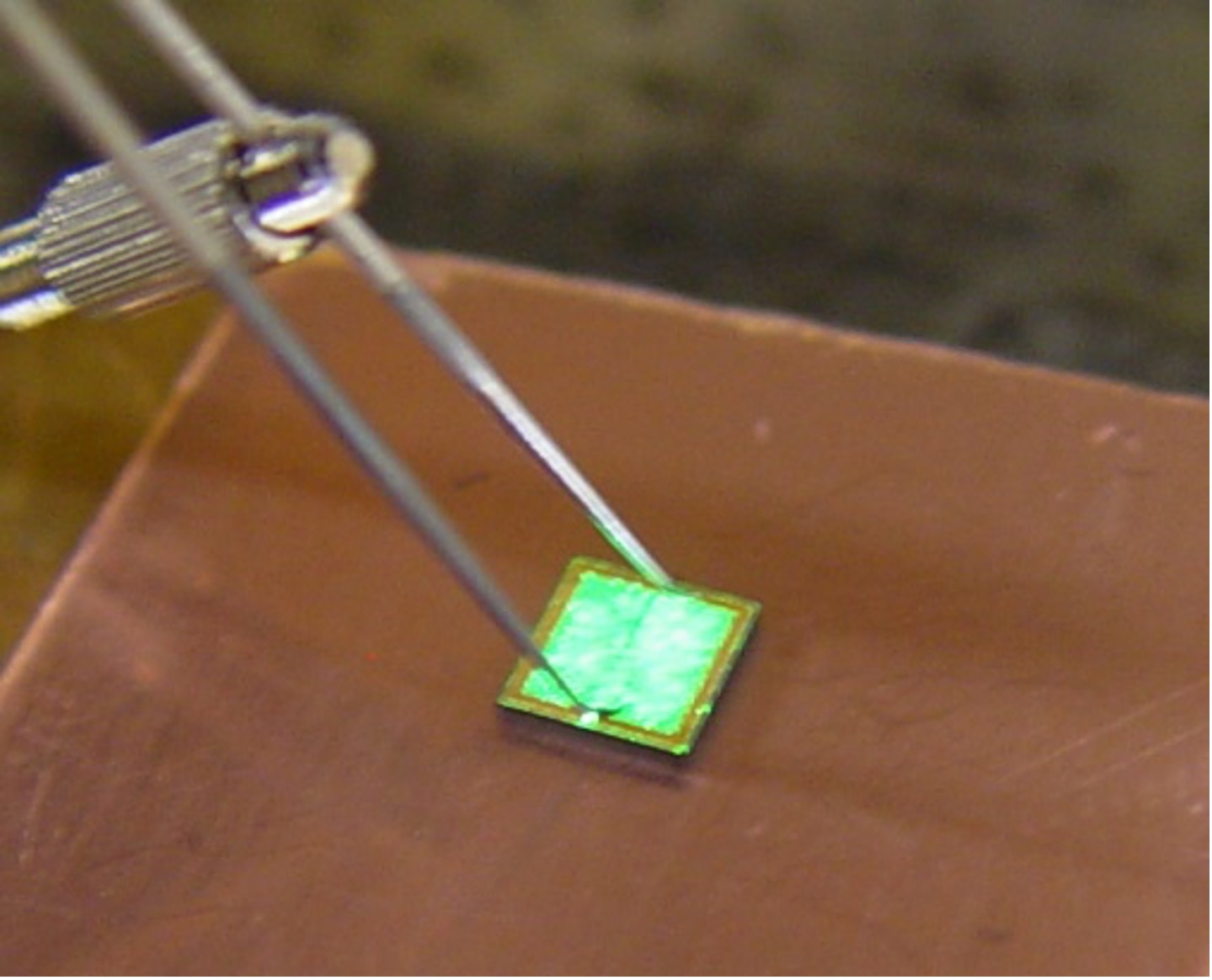
Energy Storage and Conversion: Aims to expand the family of materials and technologies that will enhance the ability to convert, store and use the electricity and enable a hydrogen-based economy with the goal of reducing the reliance on hydrocarbon fuels. Solar energy conversion to electricity and hydrogen is still searching for efficient and cost-effective materials that are abundant and with low environmental impact. The research in this field will synthesize and analyzed alternative materials such as nitride perovskites that are emerging as potential candidates with good efficiency and robustness. Another focus of this work is on energy storage systems that efficiently produce hydrogen through water splitting and advanced chemical storage systems including elements such as solid-state electrolytes, compact and resilient cathodes and anodes and emerging metal-ion batteries.
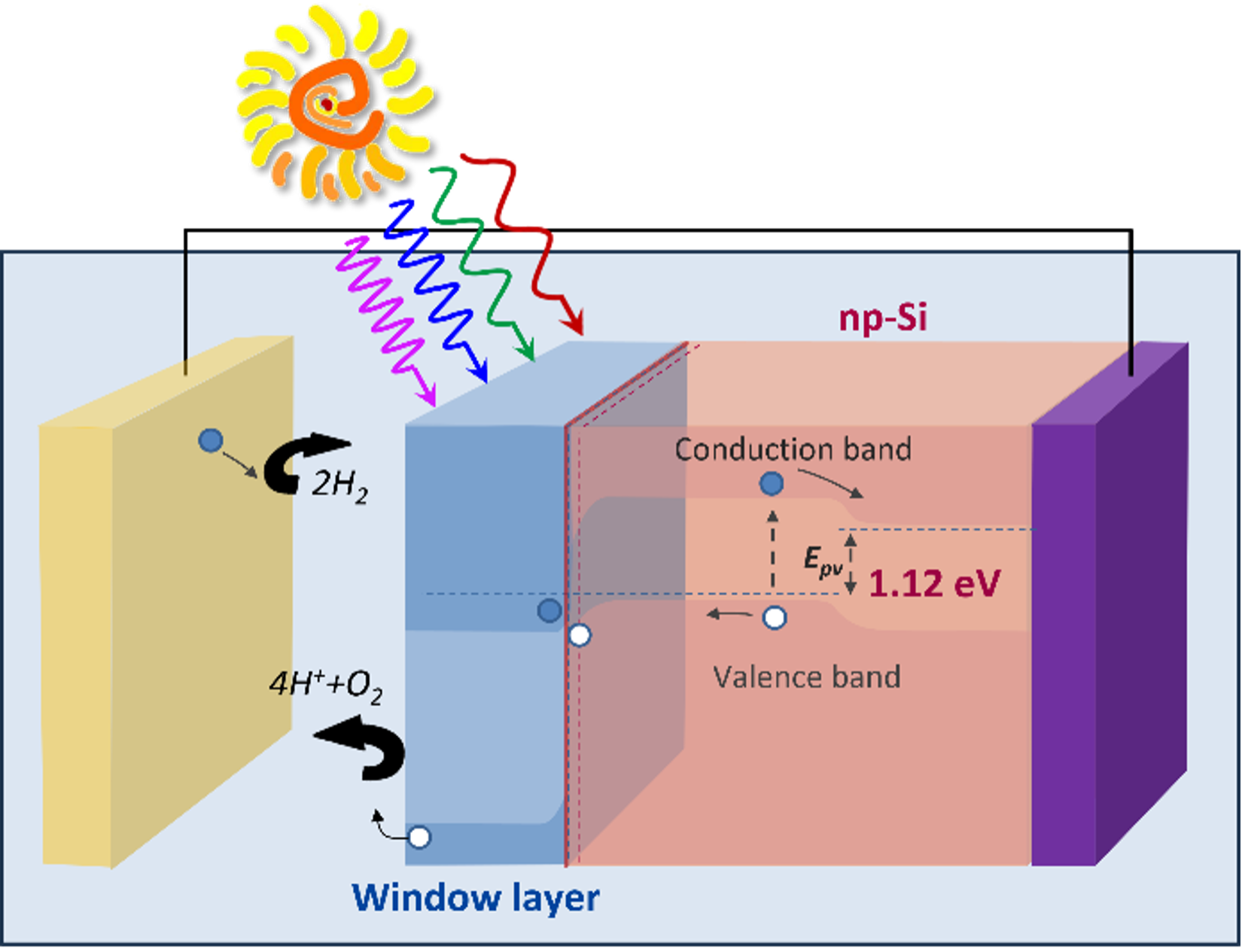
MEMS: Advancing Biomedical Sensing and Environmental Monitoring through Integrated Microsystems: This activity seeks to develop MEMS technology for biomedical and environmental applications. Research focuses on developing advanced devices for drug delivery, biosensing, and implantable devices. The research also extends to developing low-cost, high-performance MEMS sensors for environmental monitoring, such as air and water quality sensors, and integrating them into IoT networks for real-time monitoring. This work aims to advance healthcare, environmental monitoring, and IoT applications, leveraging a strong foundation in microfluidics and sensor development.
Research Professionals
Dr. Iulian Gherasoiu
Associate Professor
gherasi@sunypoly.edu
Iulian Gherasoiu received his M.S. in Electrical Engineering from “Politehnica” University in Bucharest, Romania in 1987. From 1987 to 1997 he has joined the Renewable Energy Group of the National Research Institute for Electrical Engineering in Bucharest, Romania where he held positions as Applications Engineer to Manager of the Hybrid Circuits Group. Beginning with 1997 he attended Texas Tech University and he received a M.S. in Industrial Engineering in 1999 and his Ph.D. in Electrical Engineering in 2004 from Texas Tech University. From 2004 to 2005 he held a Research Associate position in the Department of Electrical and Computer Engineering at Texas Tech University. In 2005 Dr. Gherasoiu has joined the Molecular Beam Epitaxy (MBE) Division of Veeco Instruments as Development Engineer where he has developed AlGaN/GaN high electron mobility transistors (HEMT) on silicon, GaN-on-silicon and MBE equipment for ammonia processes. In 2008 he joined Rosestreet Labs Energy in Phoenix, AZ where he teamed up with colleagues at Lawrence Berkeley National Laboratory. Here his research was focused on the development of full spectrum solar cells based on InGaN-on-Silicon semiconductors, nano-structured long-wave light emitting diodes (LED) on silicon using plasma-assisted MBE epitaxial growth.
From 2011 to 2013 Dr. Iulian Gherasoiu has joined Sumika Electronic Materials in Phoenix, AZ as a Senior Development Engineer where he has developed fabrication processes based on Metal Organic CVD (MOCVD) for InGaP/InGaAs/Ge, multi-junction solar cells, GaAs/InGaAs pseudomorphic HEMTs and InAlGaP alloys for vertical cavity surface emitting laser (VCSEL) diodes.
From January 2014 Dr. Iulian Gherasoiu has joined SUNY Poly Institute in Utica, as Assistant Professor in Electrical Engineering Technology (EET) where he is currently an Associate Professor and the Coordinator of the EET / CET programs. Dr. Gherasoiu’s research is focused on the field of efficient energy conversion through full solar spectrum materials, the development of photoelectrochemical devices for efficient hydrogen generation as well as on the solid-state lighting emitting devices for displays and flexible electronics.
Dr. Bongmook Lee
Associate Professor
leeb1@sunypoly.edu
Bongmook Lee received his B.S. degree in Electronic Materials Engineering from Gwangwoon University in 2002. He received his M.S. and Ph.D. in Electrical and Computer Engineering from North Carolina State University in 2008 and 2010 respectively. From 2010 to 2012, he held a postdoctoral research associate in the NSF-FREEDM system center working on GaN power semiconductors for solid-state transformer applications. From 2012 to 2022, he was a research professor in the Electrical and Computer Engineering department and NERC-ASSIST center, contributing to ultra-low power sensors and systems for wearable and portable applications. In 2022, he joined the State University of New York Polytechnic Institute (SUNY Poly) as an Associate Professor.
Dr. Lee's research interests cover the broad area of device design, materials, fabrication, and characterization with the current focus on wide bandgap SiC, GaN, and Ga2O3 power devices, wide bandgap power integrated circuits, micro/nanoelectronic devices, wearable systems, and advanced semiconductor materials.
Dr. Shuang Tang
Associate Professor
tangs1@sunypoly.edu
Shuang Tang received his B.S. degree in Engineering Physics from Fudan University, Shanghai in 2009. He received his M.S. and Ph.D. in Material Science and Engineering from Massachusetts Institute of Technology in 2012 and 2015 respectively.
In 2012, while at MIT, Dr. Shuang Tang and Dr. Mildred Dresselhaus have published research suggesting that “Dirac cones” exist in thin films made of bismuth and antinomy. These films could form the base material for the next-generation electronic devices for which the electron speeds would be hundreds of times greater than those in current silicon devices.
Dr. Tang's current research interests cover a variety of areas including the research of new materials for computer chips, thermoelectric materials, artificial intelligence, quantum computing and quantum communication. To this end, he has used quantum physics and nanotechnology to produce a series of new semiconductor and semi-metal materials. In addition to using supercomputers and quantum physics models, he has introduced technologies such as artificial intelligence and machine learning, that have the potential to greatly improve the speed and the accuracy of technology development. His experimental results have been verified and supported by technology companies such as General Electric and IBM.
Dr. Jiayue Shen
Assistant Professor
shenj@sunypoly.edu
Jiayue (Joyce) Shen received her B.S. and M.S. degrees in Mechanical Engineering from Zhejiang University in 2009 and Lanzhou University of Technology in 2012, respectively. She earned her Ph.D. in Mechanical Engineering from Old Dominion University in 2018. In 2018, she joined SUNY Polytechnic Institute as an Assistant Professor in the Mechanical Engineering Technology Program and has since become an Associate Professor. Her research focuses on wireless sensor networks, microfluidic devices, flexible electrodes, and various sensor applications related to soft robotics, biomedical monitoring, structural health monitoring, and assistive technology. Dr. Shen has led and participated in various projects, securing multiple grants from sponsors including NSF, Virginia Transportation Research Council, SUNY IITG, New York’s Offshore Wind Training Institute, New York State Department of Education, SUNY Clean Energy Workforce Opportunity Program, SUNY Poly Seed Program, and AFRL.
Dr. Tabiri Kwayie Asumadu
Post-doctoral Research Scholar
asumadt@sunypoly.edu
Tabiri Asumadu is a post-doctoral research fellow at the State of New York Polytechnic Institute (SUNY Poly). Prior to his current role, he served as the Head of Department of Materials Engineering at the Sunyani Technical University (STU) in Ghana over the past 10 years. He was a Visiting Scholar and postdoctoral research fellow at the Worcester Polytechnic Institute (WPI). Tabiri was born and raised in Ghana, where he received his Bachelors and Doctoral degrees from the Kwame Nkrumah University of Science and Technology (KNUST). He also obtained a Masters degree in Materials Science and Engineering from the Royal Institute of Technology (KTH) in Sweden. Tabiri has recently developed a new biochemical method for the nanofabrication of graphene on substrates that are relevant to automotive, aerospace, microelectronic and biomedical applications. He has also shown that the novel graphene structures are super-lubricious, while resulting in near zero friction during sliding contact.
Tabiri has consulted for the Ghana Tertiary Education Commission on curriculum development for Ghana’s technical education. He is also one of the founders of the Young African Scientists Group (YASG).


